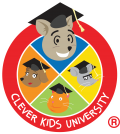The COVID pandemic is affecting how we educate our students. Remote instruction has not only become necessary, it’s requiring schools to meet new standards that often tie directly to funding. The fact is that online learning has created new challenges for our general population of students and creates even more challenges for our most vulnerable students.

There are two primary methods of online learning – – synchronous and asynchronous.
The synchronous method requires students to participate in live, interactive classes with other students and teachers. While this more closely simulates a normal classroom experience, it may not be the best solution for young children. Asking a Pre-K to 2nd grade student to be online for up to 6 hours a day is not developmentally appropriate. In addition, this would not allow teachers to schedule smaller group instruction based on similar educational profiles, a practice that is crucial in assuring that all children master foundational skills.
The asynchronous model does not require all participants to be present at the same time. Asynchronous instruction involves far more self-guided student instruction – a curricular experience where students engage in the learning materials on their own time, interacting intermittently with the teacher via the computer or other electronic devices. Because this method involves more self-guided student instruction, teachers need to have a way to check daily for student engagement. For young children, however, the ability to have shorter learning online sessions, coupled with self-driven practice, is more developmentally appropriate and beneficial.
Teachers face additional issues when delivering education through an asynchronous or hybrid model. First, they must make sure that students are available and “present” for learning. This requires more direct communication with parents. In addition, they must develop an instructional schedule that creates routines so students know when they will be required to be virtually present, and when they should be interacting with curriculum on their own. Finally, teachers need to make sure that the software they assign facilitates grouping so they can intervene appropriately for students who need additional instruction and provide more difficult material to those students who need to be challenged. Footsteps2Brilliance provides the data analysis tools that help teachers create appropriate groupings and gain insights into student engagement.
Research has always shown that young children do much better academically when their parents are involved in the learning process. Online instruction makes parental involvement essential. It is therefore important that curriculum software is not only student facing but provides parents with essential tools for helping their children. At Footsteps2Brilliance we accomplish this by having a Parent University that allows parents to understand why instruction is delivered in a specific way. We also have a 24/7 help desk so that parents can seek the help they need.
Equity is a major concern for most school districts. Vulnerable students often come from homes where access to the Internet is limited. Footsteps2Brilliance deals with this equity issue by making all of our curriculum materials accessible offline from any smartphone, tablet, or computer. Over 98% of parents own at least one of these devices. We take this one step further by making available, with the click of a button, access to both English and Spanish versions of the software. Since 80% of English Language Learners come from Spanish-speaking homes, this ensures that parents are able to help their young children succeed.
My mentor at Teachers College, Columbia University used to say, “You can lead a horse to water but you can’t make him drink. However, you can make him awfully thirsty along the way.” He would then point to us and say – – “It is your job to make your students thirsty.” Data is more essential than ever in an online environment. However, if the software is not fun and motivating for the child, there will be no learning and academic growth. This is why we use game-based methodology at Footsteps2Brilliance that motivates students to use the software and tracks their mastery of skills and progress through formative assessment.
Teachers, students, administrators and parents will be dealing with the challenge of online learning for many years to come. It is crucial that districts choose the right software tools so that all stakeholders are supported, and most importantly, young students learn how to learn. We cannot lose a generation of children due to the educational challenges brought on by this pandemic.

About the Author
Ilene Rosenthal is the CEO and Founder of Footsteps2Brilliance, a breakthrough educational software company that accelerates student achievement by uniting the power of mobile gaming with the latest in cognitive research. Footsteps2Brilliance has won numerous awards and honors. It has been recognized by the White House Initiative on Educational Excellence for Hispanics, and the Clinton Global Initiative for its ability to scale early literacy citywide. In addition, it has been honored by the United Nations for the work that it has done to help children in developing countries become literate through its partnership with Teach the World Foundation. Learn more at https://www.footsteps2brilliance.com/


